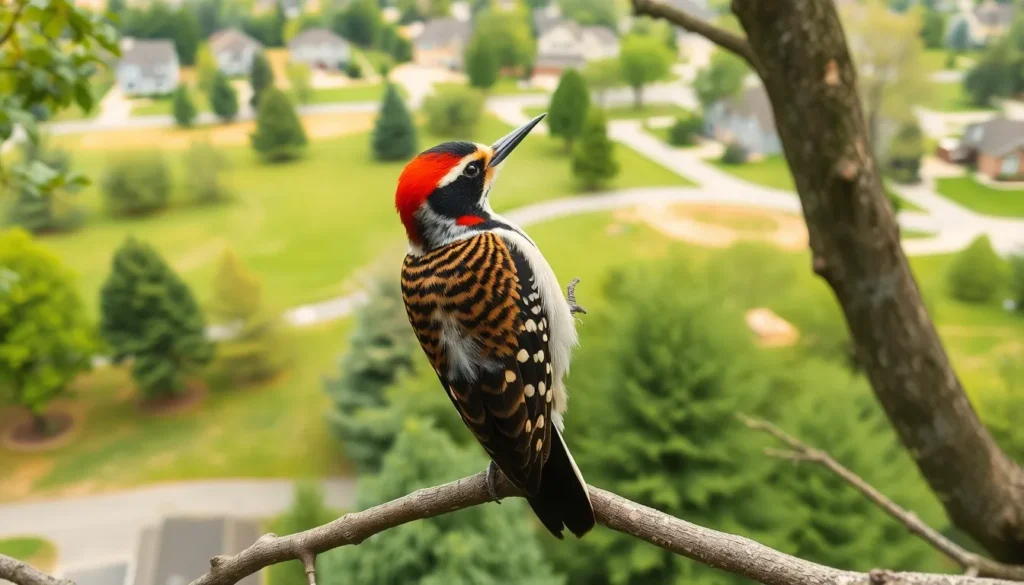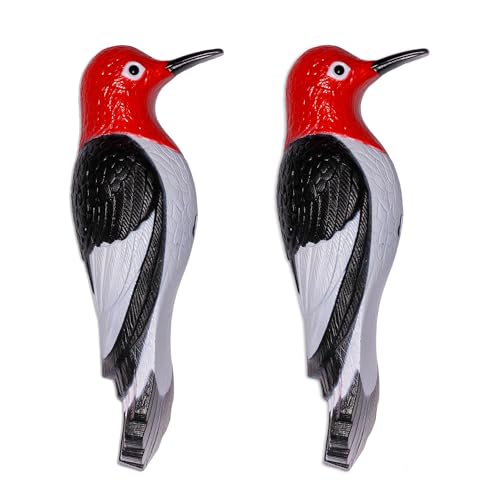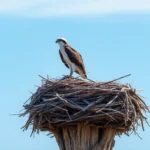We’ve all spotted that distinctive woodpecker with the striking red patch hammering away at our backyard trees, but the Northern Flicker stands out as one of North America’s most fascinating and adaptable birds. Unlike its tree-climbing cousins, this remarkable woodpecker spends much of its time foraging on the ground for ants and beetles, making it a unique sight in our gardens and parks.
What makes the Northern Flicker truly captivating is its incredible versatility and widespread presence across the continent. From the bustling suburbs of California to the dense forests of Alaska, we’ll discover how this medium-sized woodpecker has mastered the art of survival in diverse habitats. Its distinctive call, vibrant plumage, and unusual feeding habits make it a favorite among birdwatchers and nature enthusiasts alike.
Whether you’re a seasoned birder or just beginning to discover the area of backyard wildlife, understanding the Northern Flicker’s behavior and characteristics will enhance your appreciation for these remarkable creatures that grace our landscapes year-round.
Physical Characteristics and Identification
We can identify Northern Flickers through their distinctive physical features that combine woodpecker anatomy with unique ground feeding adaptations. These birds display remarkable characteristics that make them one of the most recognizable woodpecker species across North America.
Size and Build
Northern Flickers measure 11-12 inches in length with a wingspan reaching 16-20 inches. Adults weigh between 3.9-5.6 ounces, placing them among medium sized woodpeckers. Their bodies feature a sturdy build with strong legs adapted for ground foraging, unlike typical tree climbing woodpeckers. The bill appears slightly curved and measures 1.3-1.7 inches long, perfectly designed for probing soil and ant hills.
| Physical Measurement | Range |
|---|---|
| Body Length | 11-12 inches |
| Wingspan | 16-20 inches |
| Weight | 3.9-5.6 ounces |
| Bill Length | 1.3-1.7 inches |
Distinctive Markings and Coloration
Brown barred backs create the Northern Flicker’s most recognizable pattern, with distinct black bars running across buff colored wings. Black crescents mark their cream colored breasts, creating a spotted appearance that distinguishes them from other woodpecker species. A prominent black bib extends across the upper chest in most subspecies. White rump patches become highly visible during flight, serving as a key identification marker.
Two main subspecies display different underwing colors:
- Yellow shafted populations show bright yellow underwings and tail shafts
- Red shafted populations display salmon red underwings and tail shafts
Gray brown heads feature distinctive facial patterns with dark mustache stripes extending from the bill. Buff colored throats contrast sharply with the black bib marking.
Male vs Female Differences
Male Northern Flickers display red patches on the nape of their necks, creating the most reliable gender identification feature. Females lack these red nape patches entirely, showing only the gray brown head coloration. Males in the yellow shafted subspecies exhibit black mustache stripes, while red shafted males show red mustache markings.
Female Northern Flickers often appear slightly smaller than males, though this size difference becomes difficult to detect in the field. Both sexes share identical barred back patterns, breast crescents, and overall body proportions. Juvenile birds resemble females until males develop their distinctive red nape patches during their first year.
Habitat and Geographic Range
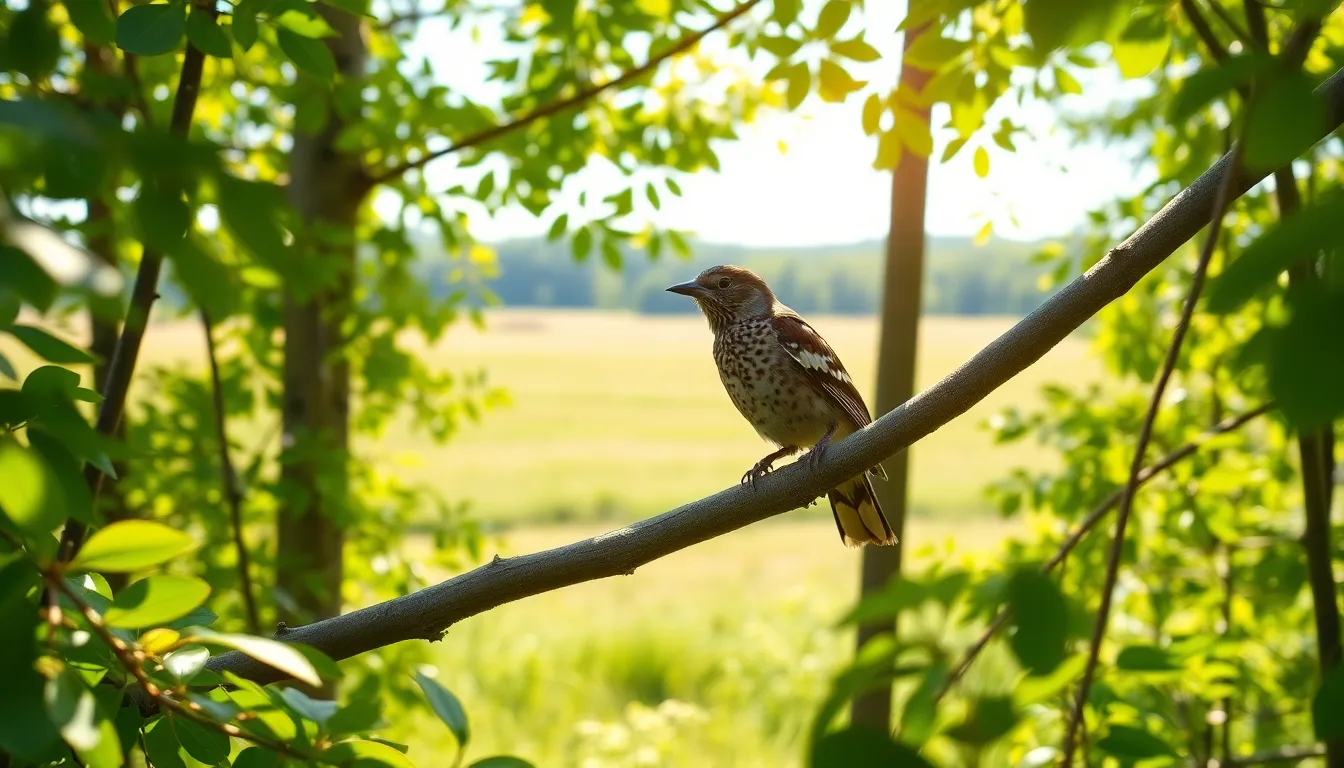
Northern flickers inhabit diverse landscapes across North America from sea level to elevations of 9,000 feet. These adaptable woodpeckers thrive in environments that provide both trees for nesting and open ground for foraging.
Preferred Environments
Northern flickers select habitats with a combination of wooded areas and open spaces for optimal foraging opportunities. Parks, suburban neighborhoods, golf courses, and agricultural lands with scattered trees provide ideal conditions for these ground feeding specialists. Forest edges, riparian corridors, and burned areas attract flickers because these locations offer abundant ant colonies and beetle larvae in the soil.
Open woodlands with oak, aspen, and pine trees serve as primary nesting sites while adjacent grasslands supply rich insect hunting grounds. Urban environments support healthy flicker populations when mature trees exist alongside lawns and gardens. Mountain meadows bordered by coniferous forests create perfect habitat mosaics that meet all their ecological requirements.
Distribution Across North America
Northern flickers occupy the largest geographic range of any North American woodpecker species. Permanent populations extend from central Alaska through Canada and across the continental United States to Mexico’s highlands. Eastern populations concentrate in deciduous and mixed forests from Maine to Florida while western birds inhabit coniferous forests from British Columbia to California.
| Region | Primary Habitat | Elevation Range |
|---|---|---|
| Alaska/Northern Canada | Boreal forest edges | 0-3,000 feet |
| Eastern North America | Mixed deciduous forests | 0-4,000 feet |
| Western Mountains | Coniferous forests | 2,000-9,000 feet |
| Southwestern Deserts | Riparian corridors | 1,000-6,000 feet |
The species reaches its highest densities in the Pacific Northwest and Great Lakes regions where mixed forest habitats provide optimal conditions year round.
Seasonal Range Changes
Northern populations migrate south during winter months while southern residents remain in their territories throughout the year. Birds from Alaska and northern Canada travel up to 2,000 miles to reach wintering grounds in the southern United States and Mexico. Migration typically begins in September with peak movements occurring during October and early November.
Western mountain populations move to lower elevations rather than traveling long distances south. Eastern migrants follow major flyways along river valleys and mountain ridges to reach warmer climates. Spring migration starts in March with most birds returning to breeding territories by late April.
Wintering flickers concentrate in areas with mild temperatures and accessible food sources including southern California valleys, Texas coastal plains, and Mexico’s central highlands. Climate change has shifted some migration patterns with certain northern populations remaining at higher latitudes during increasingly mild winters.
Behavior and Lifestyle

Northern flickers display remarkable behavioral adaptations that distinguish them from other woodpeckers. We observe these birds exhibiting unique lifestyle patterns that reflect their evolutionary specialization for ground foraging and diverse habitat utilization.
Feeding Habits and Diet
Northern flickers spend approximately 50% of their foraging time on the ground rather than in trees, making them exceptional among woodpeckers. We find these birds using their slightly curved bills to probe soil and excavate ant colonies with remarkable precision. Ants constitute 45-75% of their diet, with carpenter ants being particularly favored prey items.
Seasonal dietary variations occur throughout the year as flickers adapt to available food sources. Spring and summer months feature insect heavy diets including beetles, caterpillars, termites, and flies. We observe flickers catching flying insects mid-air during peak insect activity periods. Fall and winter diets shift to include berries, seeds, and nuts from dogwood, elderberry, sumac, and wild cherry trees.
Their feeding technique involves distinctive pecking patterns that create characteristic holes in lawns and soft soil. We document flickers consuming over 5,000 ants in a single feeding session, demonstrating their role as important pest control agents in suburban environments.
Nesting and Reproduction
Northern flicker breeding season begins in late April and extends through July across their range. We observe pairs excavating nest cavities 6-20 feet above ground in dead or dying trees, fence posts, and occasionally building structures. Excavation takes 6-17 days with both sexes participating in the cavity construction process.
Females lay 3-8 glossy white eggs measuring approximately 1.1 inches long. Incubation lasts 11-13 days with both parents sharing brooding responsibilities in alternating shifts. We find that males typically incubate eggs during nighttime hours while females take daytime shifts.
Nestling care involves intensive feeding schedules where parents make 100+ feeding trips per day. Young flickers remain in the nest cavity for 24-27 days before fledging. Parents continue feeding fledglings for 2-3 weeks after they leave the nest cavity. Most northern flicker pairs produce one brood annually, though southern populations occasionally attempt second broods.
Social Behavior and Communication
Northern flickers exhibit complex territorial behaviors centered around drumming displays and vocal communications. We identify their loud “wick-wick-wick” call carrying up to half a mile, serving as both territorial announcement and mate attraction mechanism. Drumming occurs on resonant surfaces including metal gutters, chimney caps, and hollow tree branches.
Territorial disputes involve aggressive posturing where males spread their wings and tail feathers while bobbing their heads rhythmically. We observe flickers captivating in “fencing” behavior where competing males face each other with bills pointed upward and heads swaying side to side. These displays rarely result in physical contact, with subordinate birds typically retreating after 30-60 seconds.
Migration patterns create temporary social groupings during fall months when northern populations move south. We document loose flocks of 6-12 individuals traveling together along river corridors and mountain ridges. Winter social behavior becomes less territorial as food abundance decreases, leading to increased tolerance for other flickers in prime foraging areas.
Northern Flicker Subspecies
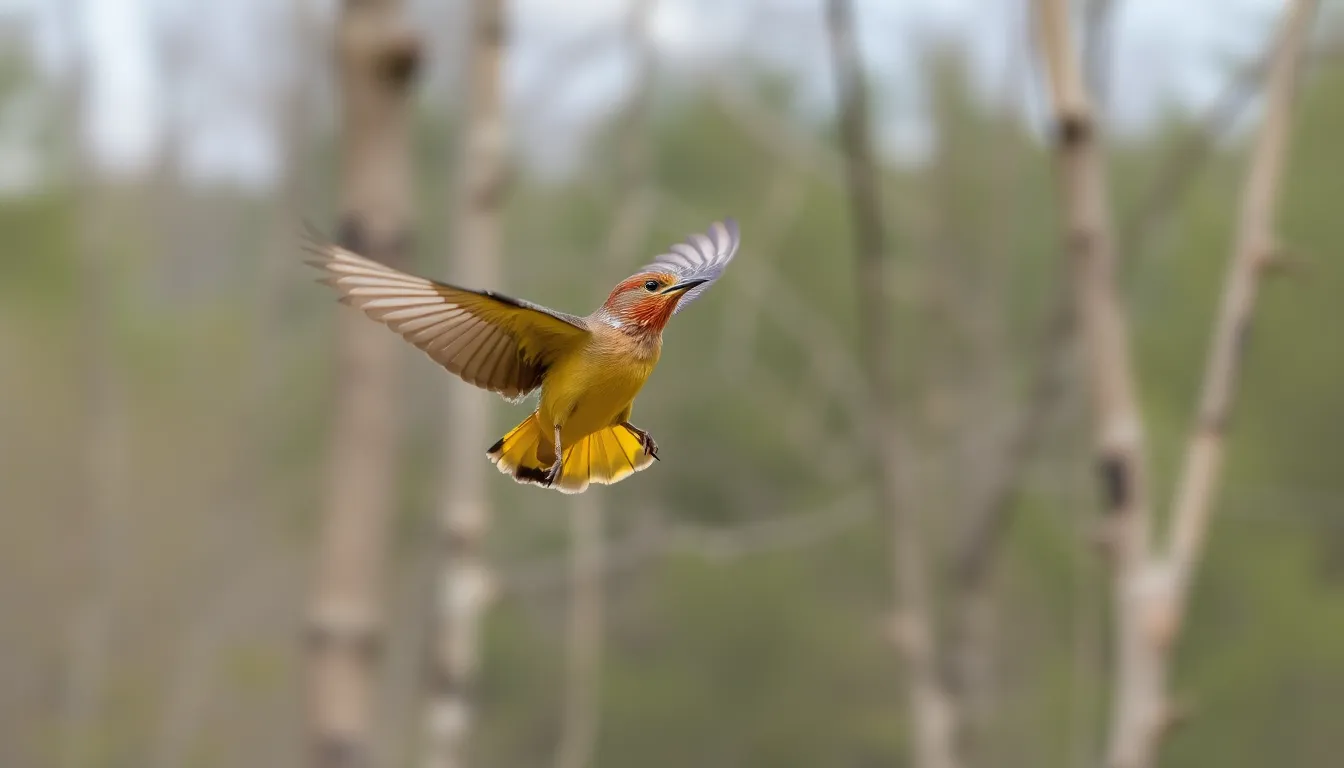
Northern flickers display fascinating regional variations that create distinct subspecies across their extensive range. Two primary subspecies dominate North America, each adapted to exact geographic regions and environmental conditions.
Yellow-Shafted Flicker
Yellow shafted flickers inhabit the eastern regions of North America from Canada through the southeastern United States. These birds showcase bright yellow underwing and tail feathers that flash brilliantly during flight displays. Males feature distinctive black mustache stripes extending from their beaks to their necks while females lack this marking entirely.
Gray brown heads characterize both sexes of yellow shafted flickers with subtle facial patterns that distinguish them from their western counterparts. Red crescents adorn the back of males’ heads as nape patches while females display plain gray crowns. Eastern populations typically measure slightly smaller than western subspecies with average lengths of 11 inches and weights ranging from 3.9 to 4.6 ounces.
Breeding territories for yellow shafted flickers extend from Nova Scotia west to central Alberta and south through Florida and eastern Texas. These birds prefer deciduous and mixed woodlands with abundant oak and maple trees that provide both nesting cavities and acorn food sources.
Red-Shafted Flicker
Red shafted flickers dominate western North America from British Columbia south through Central America. Salmon red underwing and tail feathers create stunning visual displays when these birds take flight or perform courtship rituals. Males exhibit red mustache stripes rather than the black markings found on eastern subspecies.
Brown heads with distinctive facial patterns help identify red shafted flickers in the field. Both sexes display more pronounced head markings compared to yellow shafted varieties with clearer contrast between light and dark facial features. Western populations average slightly larger measurements with lengths reaching 12 inches and weights spanning 4.2 to 5.6 ounces.
Geographic distribution for red shafted flickers encompasses mountainous regions and coniferous forests from sea level to elevations exceeding 10,000 feet. These subspecies thrive in ponderosa pine and Douglas fir ecosystems where they excavate nesting cavities in both living and dead trees. Hybrid zones occur where eastern and western ranges overlap creating intermediate birds with mixed characteristics from both parent subspecies.
Conservation Status and Threats

Northern flickers maintain stable populations across most of their range even though facing various environmental pressures. Current conservation assessments indicate this adaptable woodpecker species continues to thrive in diverse habitats throughout North America.
Current Population Trends
Northern flicker populations exhibit regional variations with overall stability across their continental range. The North American Breeding Bird Survey data from 1966-2019 shows a modest annual decline of 1.2% per year, resulting in a cumulative population decrease of approximately 47% over this period.
| Region | Population Trend | Annual Change Rate |
|---|---|---|
| Continental US | Declining | -1.2% annually |
| Canada | Stable to slight decline | -0.8% annually |
| Western states | More stable | -0.6% annually |
| Eastern states | Steeper decline | -1.8% annually |
Partners in Flight estimates the global breeding population at 9.9 million northern flickers. Eastern populations of yellow shafted flickers show more concerning trends compared to their western red shafted counterparts. Climate change models predict potential range shifts northward by 2050, with suitable habitat expanding in northern regions while contracting in southern areas.
Suburban and urban populations demonstrate greater resilience due to supplemental food sources and maintained green spaces. Rural agricultural areas with retained woodlots support stable breeding densities when adequate nesting sites remain available.
Human Impact and Environmental Challenges
Habitat modification represents the primary threat facing northern flicker populations across their range. Urban development eliminates snags and mature trees essential for cavity nesting, while intensive agriculture reduces foraging opportunities in open grasslands.
Competition for nest cavities intensifies with introduced species like European starlings displacing native flickers from prime nesting locations. These aggressive competitors occupy cavities earlier in the breeding season, forcing flickers to use suboptimal sites or delay reproduction.
Pesticide applications targeting ant colonies directly impact northern flicker food sources, with organophosphates and neonicotinoids reducing prey abundance by 30-60% in treated areas. Herbicide treatments eliminate native plant communities that support diverse insect populations essential for successful reproduction.
Vehicle collisions cause important mortality during migration periods, particularly along major flyways where traffic density peaks. Window strikes account for an estimated 1.2 million northern flicker deaths annually in urban environments.
Climate change alters precipitation patterns affecting soil moisture levels critical for ant colony accessibility. Extended drought periods force ants deeper underground, reducing foraging efficiency and reproductive success rates. Extreme weather events destroy nest cavities and disrupt breeding cycles across affected regions.
Power line electrocutions and communication tower collisions create additional mortality sources, with tall structures positioned along migration routes causing concentrated fatalities during peak movement periods.
Attracting Northern Flickers to Your Yard
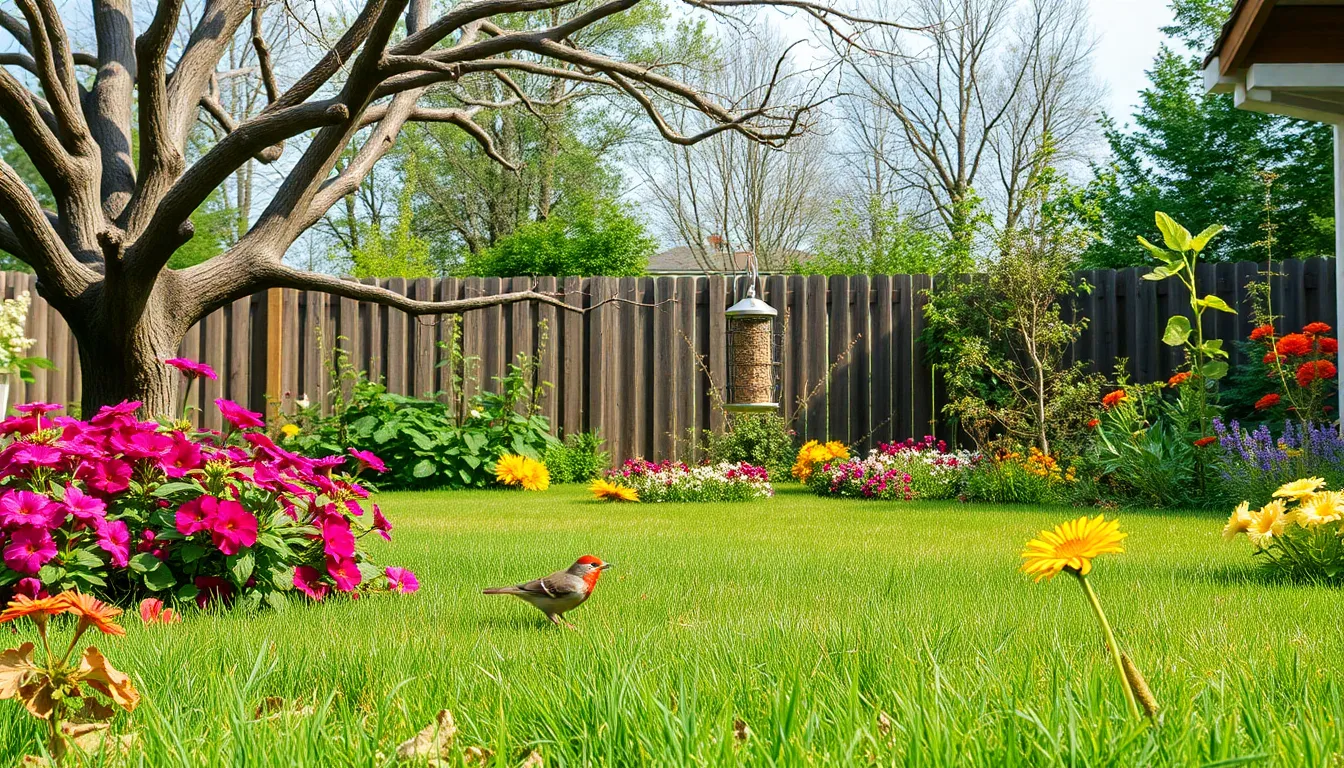
Creating an inviting environment for northern flickers transforms any backyard into a wildlife sanctuary. These ground-foraging woodpeckers respond to exact habitat elements that support their unique feeding and nesting behaviors.
Best Plants and Trees
Native oak trees provide excellent habitat for northern flickers since these trees host many ant colonies and insect populations. Mature oaks with dead branches or snags create perfect nesting opportunities, while their acorns serve as supplemental food during autumn months.
Berry-producing plants attract northern flickers throughout different seasons. Elderberry bushes, dogwood trees, and sumac varieties offer nutritious fruits that complement their insect-heavy diet. Mountain ash trees produce clusters of bright berries that remain available during winter months when other food sources become scarce.
Ground-level plantings support the ant populations that form 45-75% of northern flickers’ diet. Native grasses like little bluestem and buffalo grass create ideal ant habitat, while wildflower patches attract the insects these woodpeckers pursue. Avoiding pesticides in these areas preserves the invertebrate communities that sustain flicker populations.
Dead or dying trees provide essential nesting sites for northern flickers. Leaving standing snags at least 10 inches in diameter gives these birds opportunities to excavate their own nest cavities. Aspen, pine, and maple snags work particularly well since their softening wood becomes easier to excavate over time.
Feeding and Nesting Boxes
Suet feeders positioned 5-10 feet above ground attract northern flickers year-round. These birds prefer feeders with tail props that support their natural feeding posture. Offering suet mixed with peanut butter, cornmeal, and dried fruits provides high-energy nutrition that supplements their natural diet.
Custom nesting boxes designed specifically for northern flickers require precise dimensions. The entrance hole diameter of 2.5 inches accommodates adult birds while deterring larger competitors. Interior dimensions of 7×7 inches with a depth of 16-18 inches provide adequate space for their cavity-nesting requirements.
Positioning nest boxes 6-20 feet high on mature trees or sturdy posts creates optimal nesting conditions. East-facing orientations protect the entrance from prevailing winds and afternoon heat. Adding 2-3 inches of wood chips or sawdust to the box bottom mimics natural cavity conditions.
Ground feeding stations stocked with mealworms and ant larvae appeal to northern flickers’ foraging instincts. Platform feeders placed directly on the ground or mounted 1-2 feet high accommodate their ground-feeding behavior. Scattering food across bare soil patches encourages natural probing behaviors while providing supplemental nutrition.
Conclusion
The Northern Flicker stands as one of North America’s most fascinating and adaptable woodpeckers. We’ve explored how these remarkable birds have evolved unique traits that set them apart from their tree-dwelling relatives while maintaining their essential role in our ecosystems.
Their widespread distribution and remarkable adaptability demonstrate nature’s incredible capacity for survival and evolution. From their ground-foraging habits to their distinctive subspecies variations the Northern Flicker continues to captivate both seasoned birders and casual observers alike.
By creating flicker-friendly environments in our own backyards we can contribute to their conservation while enjoying the privilege of observing these extraordinary birds up close. The Northern Flicker truly represents the perfect blend of beauty resilience and ecological importance that makes birdwatching such a rewarding pursuit.
Frequently Asked Questions
What makes the Northern Flicker different from other woodpeckers?
The Northern Flicker is unique among woodpeckers due to its ground-foraging habits, spending about 50% of its time feeding on the ground rather than in trees. They have a distinctive red patch, brown barred back, and black crescent on their cream-colored breast. Unlike most woodpeckers, they primarily eat ants, which make up 45-75% of their diet.
How can I identify a Northern Flicker?
Northern Flickers are medium-sized woodpeckers measuring 11-12 inches in length with a 16-20 inch wingspan. Look for their brown barred back, black crescent on cream breast, and distinctive facial patterns. Males have red patches on their napes, while females lack these markings. There are two subspecies: yellow-shafted (bright yellow underwings) and red-shafted (salmon red underwings).
Where do Northern Flickers live?
Northern Flickers have the largest geographic range of any North American woodpecker, from Alaska through Canada and the continental United States to Mexico. They thrive in diverse habitats including parks, suburban neighborhoods, agricultural lands with scattered trees, forest edges, and riparian corridors. They prefer environments that provide both trees for nesting and open ground for foraging.
What do Northern Flickers eat?
Northern Flickers primarily eat ants, which comprise 45-75% of their diet. They also consume beetles, termites, caterpillars, and other insects. Seasonally, they eat fruits, berries, and seeds. Their slightly curved bill and strong legs are perfectly adapted for probing soil and ant hills during their extensive ground foraging activities.
How can I attract Northern Flickers to my backyard?
Plant native oak trees and berry-producing plants to support ant populations, their primary food source. Install suet feeders and ground feeding stations with mealworms and ant larvae. Provide custom nesting boxes designed for flickers with proper dimensions and placement. Maintain ground-level vegetation and avoid pesticide use to preserve their natural food sources.
Are Northern Flickers endangered?
Northern Flickers are not endangered, but populations show modest overall decline in recent years. They face threats from habitat modification due to urban development, competition from invasive European starlings, pesticide use, climate change, and human-related mortality like vehicle collisions. However, they remain adaptable and continue to thrive in suitable environments across most of their range.
When do Northern Flickers breed and nest?
Northern Flickers typically breed from April to July, with peak activity in May and June. They excavate nest cavities in dead or dying trees, utility poles, or buildings. Both parents share excavation duties and raise 5-8 eggs together. The young fledge after about 25-28 days, and parents may raise one or two broods per season.
Do Northern Flickers migrate?
Migration patterns vary by region. Northern populations typically migrate south during winter months, while southern residents remain in their territories year-round. During migration, flickers may form loose flocks and travel along river valleys and mountain ridges. Their migration timing depends on food availability and weather conditions in their breeding areas.

